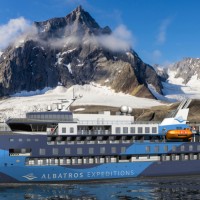Epic Antarctica, South Georgia & Antarctica
Tour Overview
On this extraordinary 19-day voyage, explore the fascinating Falkland Islands and mind-blowing South Georgia before heading to the South Shetlands Islands and the Antarctic peninsula.
Departing Argentina's southernmost city of Ushuaia, we will venture east towards the Falkland Islands (Malvinas). A British Overseas Territory, the Falklands are a unique blend of British culture (expect tea and red phone boxes) and southern wildness, where penguins cavort alongside sheep on former battlefields.
From the Falklands, we venture onwards to South Georgia. A strip of jagged glacier-clad mountains piercing the brooding sky, South Georgia leaves a mark on every visitor, and it is no mystery why. The shores brim with wildlife, with thousands of King Penguins, elephant seals and Antarctic fur seals. The vast penguin colonies, seal-filled seas and albatross-packed skies have to be seen to be believed.
Continuing southward, we will delve deeper into the inlets and bays of the Antarctic Peninsula, entering the famous Gerlache Strait, where glittering ice cliffs and precipitous peaks rise straight out of the frigid water. Icebergs, glaciers, mountains and rugged snowfields characterise this wildly beautiful alien landscape. We always aim to visit locations which showcase the best of Antarctica, and we are always on the lookout for wildlife; feathered friends and jaw-dropping scenery and landscapes are guaranteed!
The new, ice-strengthened expedition vessel, will allow you to get up close and personal with the breathtaking coasts we'll be passing. All expedition visitors will have the opportunity to explore the Antarctic mainland and the numerous sub-Antarctic and South Georgia islands via Zodiac cruising and shore landings, with onboard presentations to enhance your experience.
Viva's Best Bits...
Explore remote Antarctica with shore landings, witness amazing wildlife on South Georgia and call in at the Falkland Islands with a unique blend of British culture and remote wild landscapes.
Visit “the Galapagos of the south” – South Georgia; the greatest concentration of warm-blooded wildlife on Earth. Including nesting Albatrosses and 6 species of penguins (including King).
Voyage to Antarctica in comfort on the new ship Ocean Albatros with her special X-Bow, providing high stability in rough weather and allowing for a smooth cruise & lower carbon emissions.




